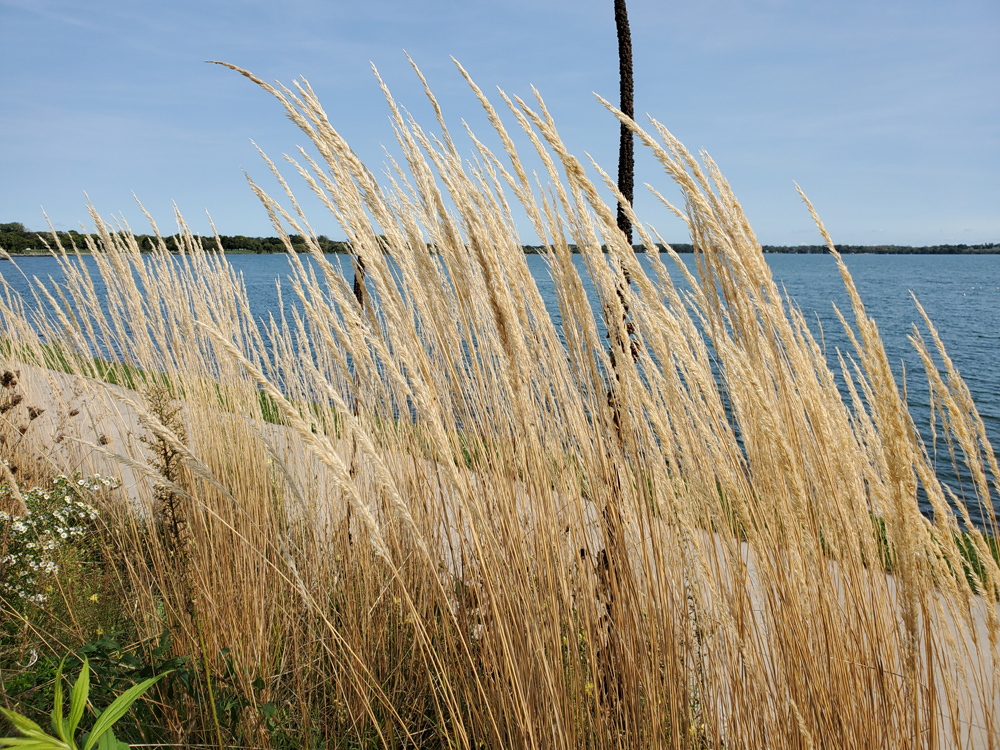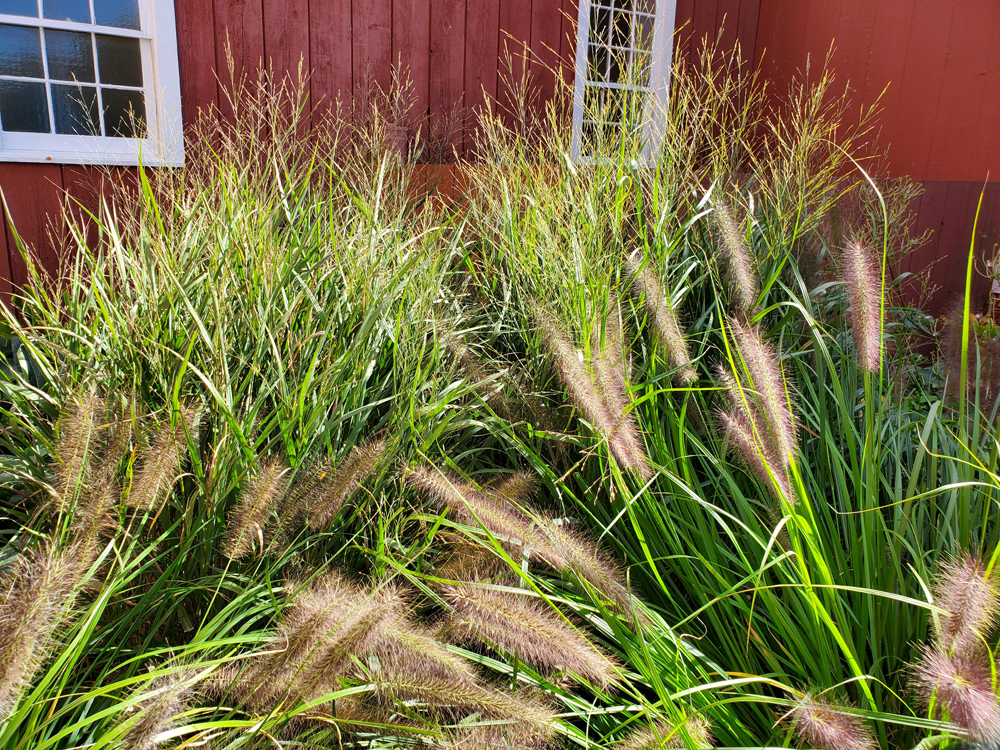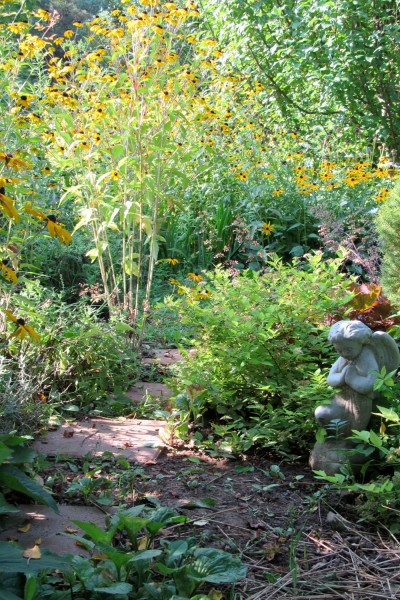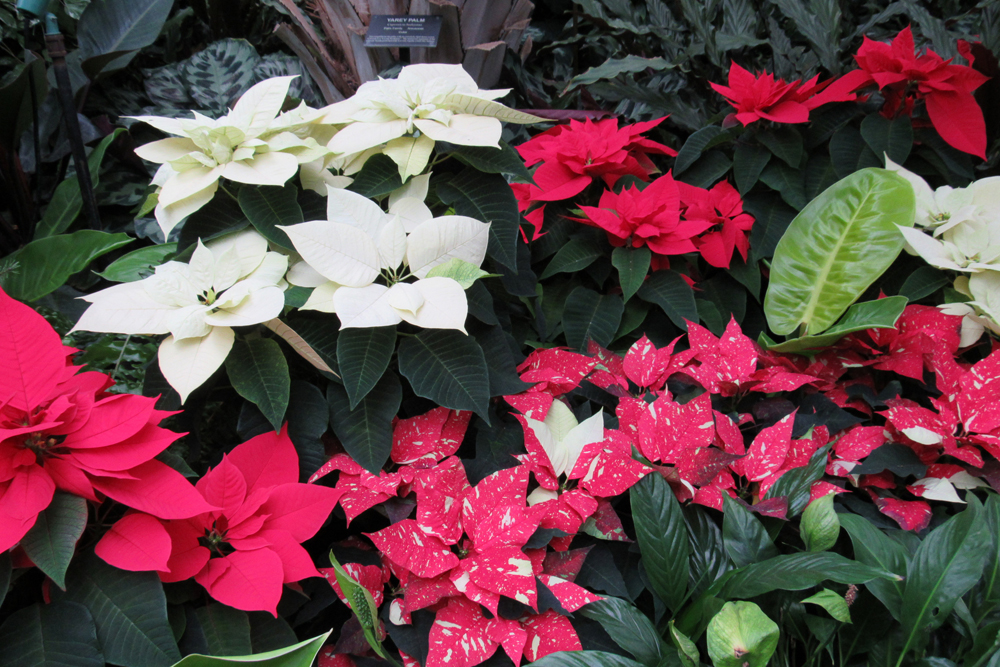Grasses in the landscape

As a gardener, I find grasses fascinating. I love the diversity of grasses, which include everything from blue fescue to sweet corn. Grasses are beautiful and add so much texture and serenity to the garden. In autumn, grasses catch the golden rays of the sun and really light up the landscape.
Grasses serve many purposes in the garden. Illinois Extension says native grasses can increase root competition in plantings, which helps other native plants stay shorter, preventing them from flopping over. Roots of native and ornamental grasses are much longer than the roots of lawn grasses.
Grasses also offer a food source and habitat for beneficial insects, which makes them a great addition to pollinator gardens.

True grasses are members of the Poaceae family, according to Penn State Extension. They have cylindrical hollow stems which are jointed. Grasses can be either cool or warm-season perennials. Cool-season grasses begin to emerge when temperatures reach 60 to 75 degrees F and flower in early summer. Their ornamental features mature late in the season. Warm-season grasses come out of dormancy in warmer temperatures and flower in late to mid-summer and into early fall.
As you might know from battling grasses we see as weeds, the plants spread by rhizomes or stolons or they form clumps with a crown. New growth on perennial grasses emerge with new shoots or tillers. Grasses are typically wind pollinated with spikelets developing into seeds or grains later in the season. Seed heads are often ornamental and add texture to your garden.
Penn State Extension notes that cool-season grasses have many benefits to your landscape, including early spring foliage with flowering by early summer; naturalistic, simple, soft-styling; movement and sound; maturing, long-lasting forms and colors well into fall; sequencing with later, warm-season ornamental grasses, and companion intermingling with the petal flowers and foliage of summer and fall plants.
In addition to grasses, you might want to consider planting sedges in your landscape. In contrast to grasses, sedges have triangular-shaped solid stems with three edges and no nodes. You may have heard the saying “sedges have edges” referencing their angular stems. Illinois Extension says sedges are tough native perennials which have a grass-like appearance and interesting flower structures from tiny tufts to spiky balls.
Sedges thrive in many different growing conditions. Pennsylvania sedge can handle dry soil conditions in full shade, making it a great companion for ferns with its shorter stature and fine texture. It can even function as a ground-cover, spreading by rhizomes. Rosy sedge is short and likes shade, but will also grow in sun, tolerating both wet and dry soils. The foliage is a deep green color and very fine-textured.
Swamp oval sedge, also called palm sedge, does well in both sun and shade and reaches heights of almost three feet in full sun. It grows in wetter sites and is also a good candidate for rain gardens. It even tolerates soil compaction and clay soils and has bright green foliage with a coarse appearance. The dense, larger leaves have a unique texture and turn golden yellow in the fall.
Look for sedges at local native plant nurseries and garden centers or from online retailers.




